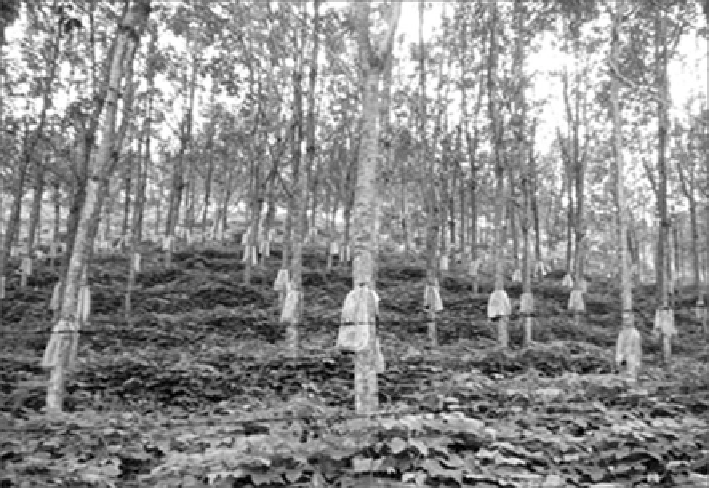Geoscience Reference
In-Depth Information
Fig. 16.9
Rubber plantations occupy uplands. They have replaced native forest
Traditionally soil conservation is the main responsibility of the Ministry of
Agriculture (MoA) and only a partial responsibility of the Ministry of Environment
and Natural Resources. MoA has been keen to address this problem and several
measures such as reforestation, adopt regulatory framework for soil conservation,
develop policy framework for combat land degradation under the Convention to
Combat Land Degradation and reduce soil and water pollution have been adopted
over the past few decades to control the land degradation. However these have
only had a limited impact and this is reflected in the spread of settlements into
environmentally fragile areas; eroded uplands; low and unreliable crop yields, and
other offsite effects of soil erosion such as sedimentation of reservoirs and foods.
These trends need to be reversed early; if not, there could be serious economic and
social consequences.
Clearly, there are number of policies, strategies and plans prepared by different
Ministries, Departments and other Agencies that address various aspects of land
degradation in Sri Lanka. They have also introduced environmental safeguards. The
Ministry of Industry and Investment Promotion has also prepared policies such as
the National Industrial Pollution Reduction Policy and the Industrial Site Selection
Policy that also address the land degradation issues. The Department of Agriculture
(under the Ministry of Agriculture) has prepared several policies, strategies and
plans such as the National Policy Framework - Ministry of Agriculture Lands
and Forests-1995, National Land Use Policy (draft) - 2002, National Policy on
Agriculture and Livestock-2003, The National Agriculture, Food and Nutrition

Search WWH ::

Custom Search